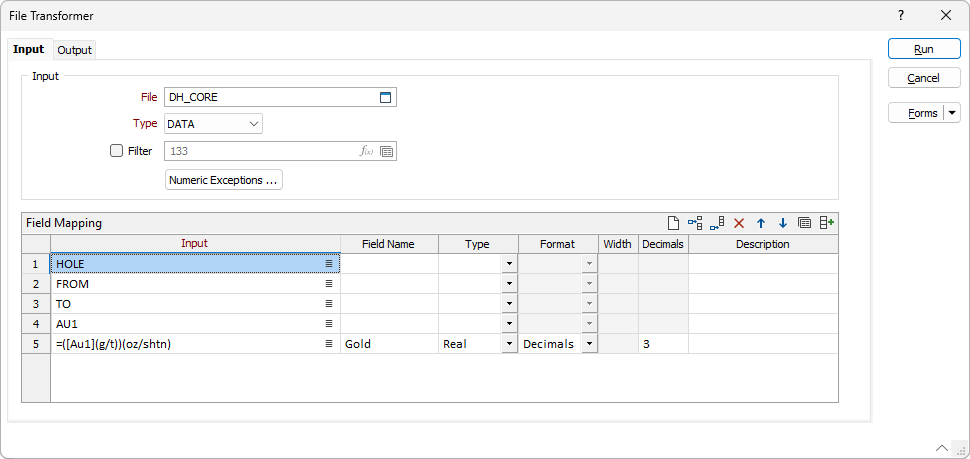File Transformer
![]()
Input
File
Select a file type and double-click (or click on the Select icon) to select the name of the Input file.
Select the filter check box to define a filter to selectively control which records will be processed. Enter a filter number in the adjacent response. Double click (F3) to see a list of existing filters. Right click (F4) to open the dialog box where you can create a new filter.
Numeric Exceptions
(Optionally) Use the Numeric Exceptions group to control the way that non-numeric values are handled. Non-numeric values include characters, blanks, and values preceded by a less than sign (<).

Field Mappings
Use the Fields Mappings grid to setup the fields to be read/derived from the input file for transformation/copying to the output file. Use the buttons on the local toolbar to Manage the rows in the list.
The grid list accepts the following settings for each field:
Input
A field from the Input file. (An Auto-fill option on the toolbar can be used to populate the grid with all the fields in the input file.)
The input field may also be a complex expression which evaluates as a character string, for example:
=if ([au] >5) then "HIGH GRADE" else "LOW GRADE" endif"
Field Name
The output field name. If this entry is left blank and the entry for the input field is not an expression, the input field name is used.
Type
The output field type. If this entry is left blank and the entry for the input field is not an expression, the type of the input field is used.
Format
The format options you can select for a field will depend on the type of field. For more information, see: Formatted Types
Width
For Character and Numeric fields, specify the width of the field.
Decimals
For Numeric fields, and Real or Float binary fields, the number of decimal places.
Description
Allows the purpose and the content of a field to be described using a maximum of 255 characters.